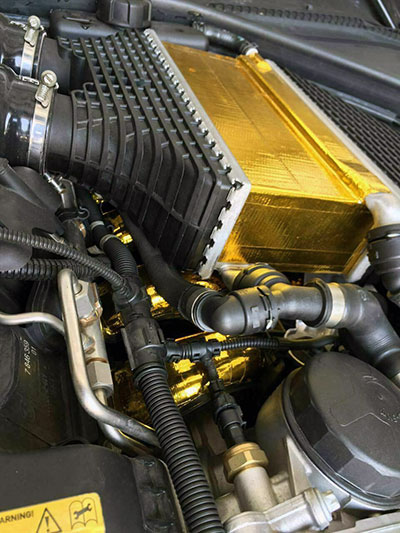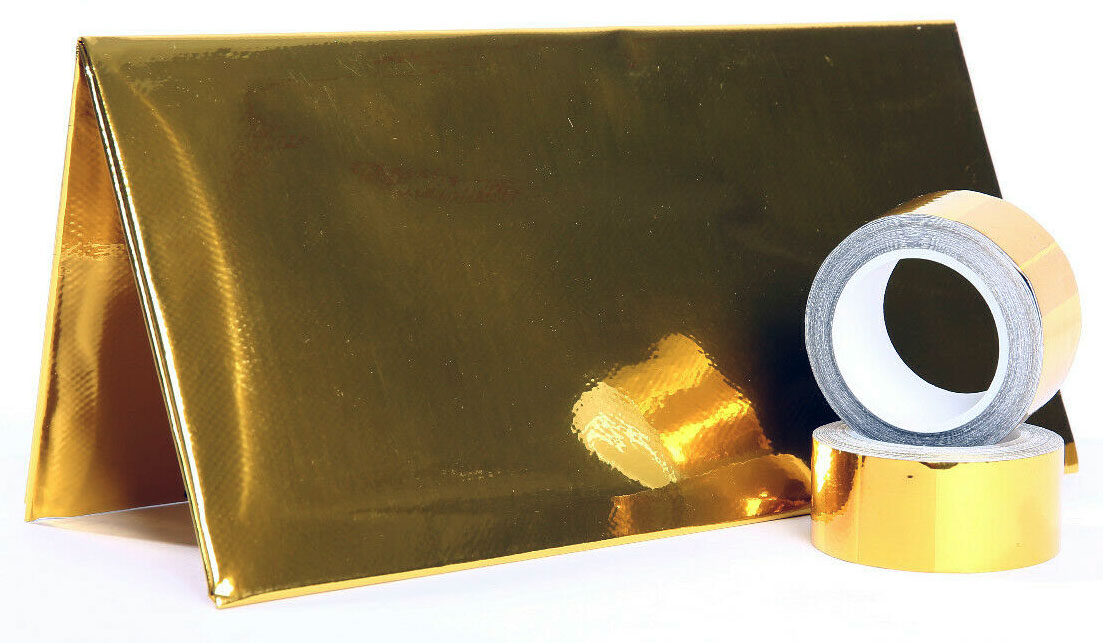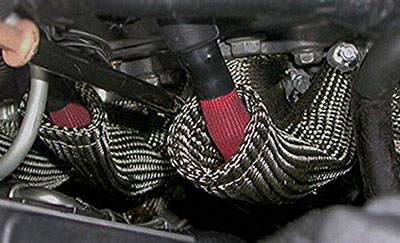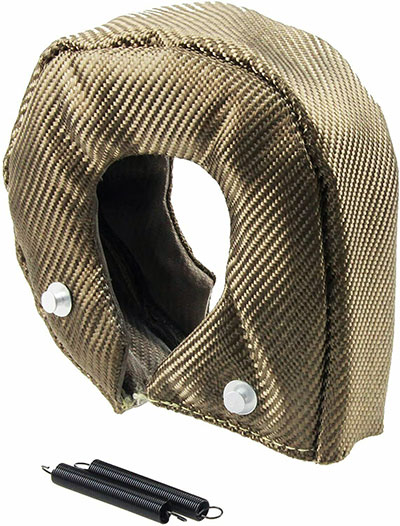Modern engines are designed to work best at higher temperatures of about 190 to 210 degrees Fahrenheit. Keeping an engine at these warm temperatures helps the car function properly and limits tailpipe emissions. But that doesn’t mean you should ignore signs of an overheated engine.
A car’s engine is considered overheated if it exceeds 230 degrees. In this case, you should stop and investigate. And there are easy ways to prevent an engine from overheating in the first place.
Shop now for heatshield products
How to Investigate the Causes

A sheet of insulating material can lower temperatures and still look good.
When your car is cooled down, check the radiator overflow container to see if it has the proper coolant level. Most containers these days indicate the necessary minimum amount of coolant with hash marks on the side. If the level is low, refill the container and re-check it in a few days to see if it stays at the fill line.
After your next drive, give your hot car 15 to 20 minutes to cool down fully. Then, place a thick rag over the radiator cap and slowly open the cap. Remove the cap and confirm that the coolant is filled nearly to the top of the radiator. Also, examine the fluid to determine if it’s discolored or if you see rusty debris.
If so, it’s time to flush the radiator and refill it with the proper type and amount of coolant. Read: Regularly Check These Four Car Fluids.
If your car continuously loses radiator fluid, check for a leaky hose or radiator. Or it might be the car’s heater core or the head gaskets. Whatever the cause, don’t put off repairing this type of leak.

Insulating material comes as sheets, mat, and tape.
Check the Fans and Confirm Sensor Readings
With the engine still off, confirm that there’s no debris blocking the air into the radiator.
If there’s adequate coolant and the radiator is free, then take the car out for a spin. Listen carefully for the sound of cooling fans activating as the car warms up. You can leave the engine running, open the hood, and check the fan’s movement. If the fan doesn’t engage and spin, your fan belt might be slipping, or the fan clutch might need replacing.
If the car continues to indicate that it’s hot, take a temperature reading with an infrared or laser thermometer. With the hood open, take a reading of the radiator hoses and the engine block. If there is a discrepancy between the dashboard indicator and the number indicated in a handheld thermometer, the engine sensor may need replacing.
Use Heat Shields or Thermal Wrapping

Insulating covers keeps heat away from spark plugs.
There are steps you can take to deal with a car that runs hot. For example, a car’s starter might absorb heat from a hot engine—and no longer work. The answer is to wrap the starter with an insulating mat or a heat shield. After that, startups should become a breeze.
Heat barriers, made with reflective metal sheeting, can be shaped to help insulate other vital engine components. For example, many drivers insulate the air-cleaner intake area, radiator hoses, and ductwork.

Insulate a turbocharger’s wastegate to reduce temperatures.
If you have an after-market exhaust and there’s too much heat near your spark plugs and wires, we recommend using thermal wraps for insulation. Or wrap the exhaust headers with insulating tape. It might not be pretty, but it works.
Another technique to prevent engine overheating is to change the fan settings. Most decent local shops can easily “tune” settings, so the fan comes on at a lower temperature reading.
Do you have a turbo? Turbocharged engines force heated compressed air into the engine intake and naturally cause temperatures to rise. That is why most turbocharged engines should include an intercooler in the setup.
Read this: How Intercoolers Work, And Why You Might Want One.





